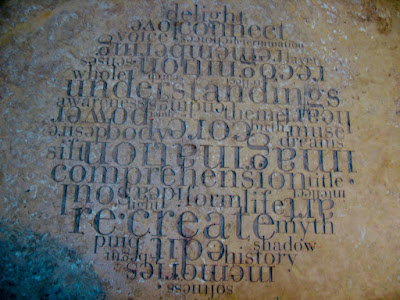 |
| pileated woodpecker in Winter
Photo by J. Harrington
|
Now that we've touched on the current events of interest to us, let's explore a bit of a bioregional framework. I remain surprised, and disappointed, that internet searches appear to reveal little, if any, active interest in bioregionalism in Minnesota. Perhaps it's a matter of semantics. For now, let's take a look at Kirkpatrick Sale's Dwellers In The Land chapter on scale. From the largest to the smallest, he lists:
- Ecoregion
- Georegion (for example, a watershed)
- Morphoregion (such as a subwatershed)
Another example of bioregions can be seen in the Native Land map of North America.
The next smallest regional unit is the community, which Sales notes "seems to have favored clusters of 500 to 1,000 people for the basic village ... and 5,000 to 10,000 for the larger tribal association or extended community." Sales also notes that a larger city (1,000,000 and more) "is an ecological parasite as it extracts its lifeblood from elsewhere and an ecological pathogen as it sends back its wastes." He closes the section on scale by referencing what is becoming one of my favorite metaphors, the mosaic.
The bioregional mosaic, then, would seem logically to be made up of communities as textured, developed and complex as we could imagine, each having its own identity and spirit, but each of course having something in common with its neighbors in a shared bioregion....
we dream about our dreams.Metropolitan
By John Fuller
In cities there are tangerine briefcases on the down-platform
and jet parkas on the up-platform; in the mother of cities
there is equal anxiety at all terminals.
West a business breast, North a morose jig, East a false
escape, South steam in milk.
The centres of cities move westwards; the centre of the
mother of cities has disappeared.
North the great cat, East the great water, South the great
fire, West the great arrow.
In cities the sons of women become fathers; in the mother of
cities the daughters of men have failed to become mothers.
East the uneager fingers, South the damp cave, West the
chained ankle, North the rehearsed cry.
Cities are built for trade, where women and men may freely
through knowing each other become more like themselves;
the mother of cities is built for government, where women
and men through fearing each other become more like each
other than they care to be.
South the short, West the soap, North the sheets, East the
shivers.
In cities the church fund is forever stuck below blood heat; in
the mother of cities the church is a community arts centre.
West the Why-not, North the Now-then, East the End-
product, South the Same-again.
In cities nobody can afford the price; in the mother of cities
nobody dares to ask the price.
North the telephone smile, East the early appointment,
South the second reminder, West the hanging button.
In cities the jealous man is jealous because he is himself in his
imagination unfaithful; in the mother of cities the jealous man
is jealous because he reads the magazines.
East the endless arrival, South the astounding statistic,
West the wasted words, North the night of nights.
In cities we dream about our desires; in the mother of cities
********************************************
Thanks for visiting. Come again when you can.
Please be kind to each other while you can.


























